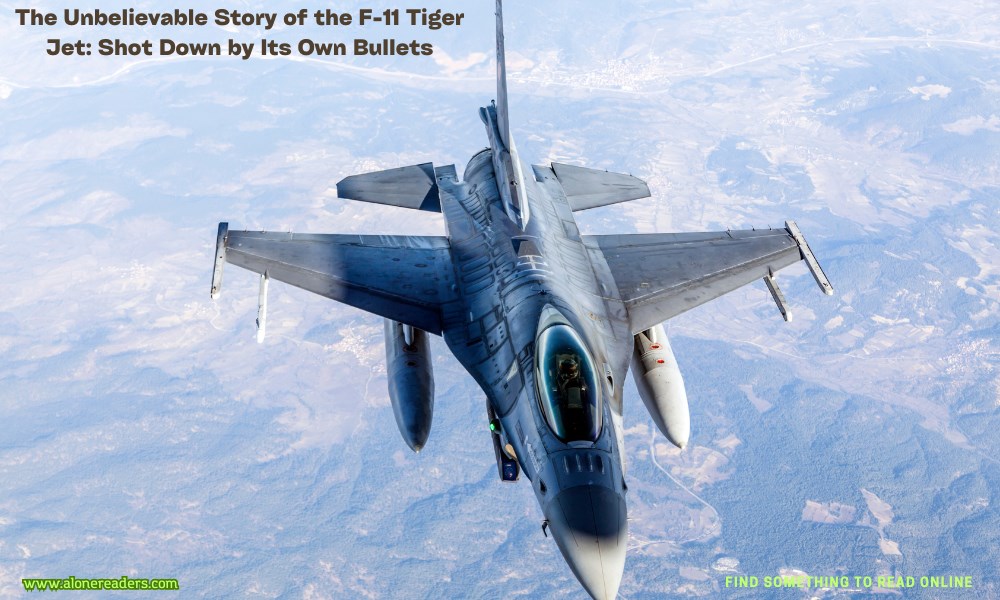
In the annals of aviation history, few stories are as remarkable and perplexing as the incident involving the F-11 Tiger jet. This supersonic aircraft, designed for speed and agility, became famous for a unique and unintended feat: shooting itself down with its own bullets. The tale of the F-11 Tiger is a testament to the complexities of high-speed flight and the unexpected challenges that can arise in the world of military aviation.
The incident occurred on September 21, 1956, during a routine test flight off the coast of Long Island, New York. The pilot, Tom Attridge, was an experienced aviator conducting a weapons test. Flying at a high speed in a shallow dive, Attridge fired a burst from the jet's 20mm cannons. What happened next would become a legendary anecdote in aviation circles.
Shortly after firing, Attridge felt a series of impacts on the aircraft. Initially puzzled, he soon realized the gravity of the situation as the jet began to malfunction. Instruments showed a loss of power, and the engine started to fail. Attridge had unknowingly flown into the path of the very bullets he had just fired. The F-11 Tiger, with its impressive speed, had overtaken its own projectiles.
To understand how this could happen, it's essential to delve into the physics and aerodynamics at play. When the cannons were fired, the bullets were propelled forward at a high velocity relative to the aircraft. However, once in the air, these bullets were subjected to drag – the resistance of air molecules slowing them down. As the bullets decelerated, the F-11 Tiger, still maintaining its high speed, continued on a path that would eventually intersect with the bullets' slower trajectory.
Another critical factor was the ballistic trajectory of the bullets. Unlike a straight line, bullets follow a curved path influenced by gravity, causing them to descend gradually. The F-11 Tiger was in a shallow dive, mirroring this descent. As a result, the paths of the bullets and the jet converged, leading to the unprecedented event where the jet was hit by its own munitions.
Attridge’s quick thinking and piloting skills were crucial in preventing a total disaster. Despite significant damage to the engine and other systems, he managed to crash-land the aircraft safely. His actions not only saved his life but also provided valuable insights into the behavior of high-speed aircraft and their weapon systems.
The incident highlighted several important lessons for military aviation. It underscored the need for thorough understanding and consideration of projectile behavior in relation to the aircraft's speed and flight path. This knowledge influenced future designs and operational procedures to prevent similar occurrences.
The F-11 Tiger itself was a remarkable aircraft, known for its sleek design and performance. Developed by Grumman, it was one of the first supersonic jets used by the United States Navy. Its design incorporated advanced aerodynamics and powerful engines, making it a formidable presence in the skies. However, this very capability for high-speed flight contributed to the unusual incident that would define its legacy.
In the broader context of aviation history, the F-11 Tiger’s self-inflicted damage stands as a unique case. While incidents of friendly fire are not uncommon in military history, the F-11’s encounter with its own bullets is perhaps the only instance where an aircraft was damaged by its own projectiles in such a direct manner. It serves as a reminder of the unexpected challenges that can arise with advanced technology and the importance of continuous learning and adaptation in the field of aviation.
This story also captures the imagination of aviation enthusiasts and professionals alike. It’s a narrative that blends human ingenuity with the unpredictability of technology, highlighting both the advancements and the potential pitfalls of high-speed flight. The F-11 Tiger’s legacy is thus not just of a supersonic jet but of a pivotal learning moment in aviation history.
Today, the tale of the F-11 Tiger is often recounted in discussions about the quirks and challenges of military aviation. It serves as a case study in the physics of flight and the critical importance of understanding the interaction between aircraft and their weaponry. For pilots, engineers, and aviation historians, it is a fascinating example of how even the most advanced machines can behave in unexpected ways.
In conclusion, the F-11 Tiger’s encounter with its own bullets is a story that resonates across the aviation community. It is a testament to the complexities of flight and the importance of continuous innovation and vigilance. As we look back at this remarkable incident, we gain not only a deeper appreciation for the technological advancements of the time but also a reminder of the ever-present need for caution and respect for the forces of nature in the world of aviation.